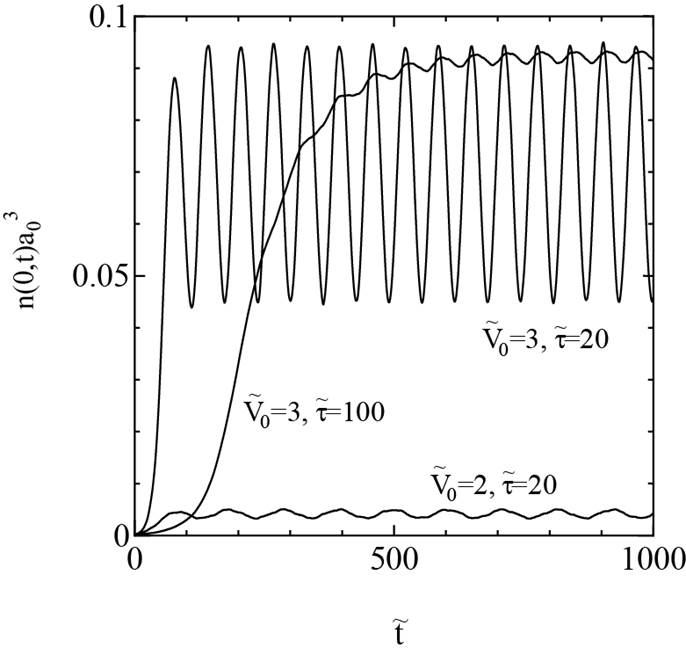

The time-dependent Schrödinger equation, the most fundamental equation governing the dynamics of many-particle systems, can be expressed in the form of quantum density-matrix equations, which provide insight into a link between microscopic quantum mechanics and mesoscopic/macroscopic transport. By means of this formalism, we have been analyzing diverse phenomena such as quantum oscillation of an electron induced by nonadiabatic perturbation, nonlinear response of electron gas to an impurity, plasma oscillation, atomic multiphoton ionization, etc.

Fig. 1: Quantum oscillation of an electron induced by a suddenly applied potential well.
Nonlinear x-ray phenomena, demonstrated with the intense x-ray free electron laser 'SACLA', are the subjects studied in collaboration with UEC and other experimental groups. We have been developing microscopic theories of interaction between matter and x-rays to interpret the experimental data. Specific topics include electronic structures of matter in multiple core excited states [1], dynamics of core-level excitation [2], wide-range photoabsorption spectra of solids [3], mechanisms of x-ray saturable absorption [4], and so on.